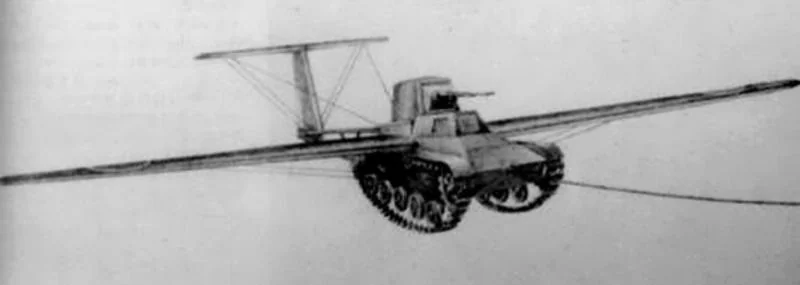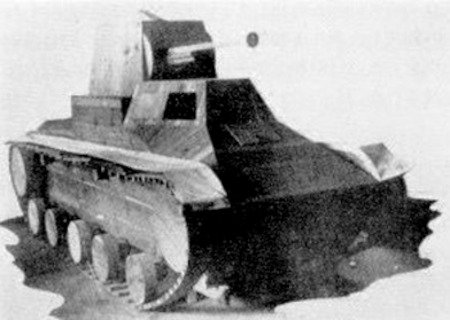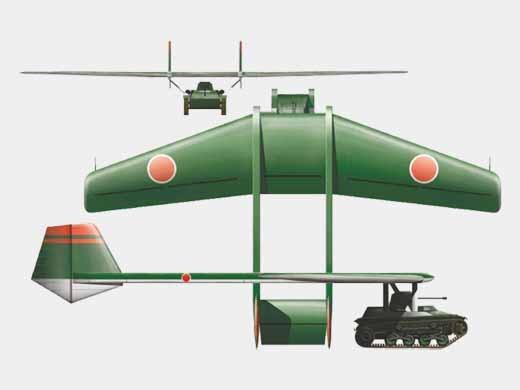Well it does seem like the concept of “Flying tanks” was fairly popular back then, by now I think we are all quite familiarised with the Antonov A-40, that one infamous soviet flying tank, well there were also the British who came up with their own flying tank idea and then now the Japanese, who began playing with this concept as early as 1939.
So just like the soviets, the Japanese were having difficulties in transporting their tanks from long distance from the main island to China or to one of their islands in the pacific theatre, whatever. And it functioned pretty much how the soviets envisioned with the Antonov A-40, you glide where you wanted the tank to go and drop it behind enemy line and boom you’re good to go. Issue is that tanks are, pretty heavy and it was already difficult enough to carry them inside a transporter plane or even parachute them, so you obviously need to come up with a special tank design for this to even work.
This is where you get the Special number 3 light tank Ku-ro ((特三号戦車 クロ), designed by Mistubishi. The special number 3 light tank was based off the Type 98 Ke-ni light tank, having it’s weight reduced from 7.2 tons to a 2.9 tons, which basically made its mass comparable to tankettes, Except instead of using machine guns it was decided it would be armed with a Type 100 37mm tank gun with no coaxial or hull mounted machine gun, there were also plans to use a flamethrower or a 7.7 type 97 machine gun instead of the 37mm gun.
Then in order to make this project actually work, the IJA also decided to a design a entirely brand new glider specifically for the Ku-ro, the Maeda Ku-6. A 700 kg twin boom craft specifically designed to fit the tank, the glider was designed by the Aeronautical insistute of the imperial university located in Tokyo, when the Ku-ro is mounted in the Ku-6 glider, the glider was designed to be towed behind a Mitshubishi K-12 medium bomber.
One of the main issues was that the Ku-ro’s track couldn’t match the takeoff and landing speed of the K-12 which will cause major frictional damage to the tank, so a pair of ski was attached to the glider and when launched and landed, it can be easily dissembled
By now it is pretty obvious that the project had failed, which could be attributed to two main factors. Firstly was the slow pace of work of the project, though the operational glider was completed in 1945, the tank wasn’t, so a wooden mock up with ballast was favoured instead and it was quickly rushed to be transported by the Mitsubishi Ki-21 medium bomber. And almost from the start the Ku-6 had very poor flight characteristics, such as poor manoeuvrability and the stress on the tank. So the IJA officers quickly ditched it and favoured the ku-7 general purpose glider instead.
Secondly was the nature of the war had already changed for the Japanese, the army was battered and depleted and the IJA airforce had lost it’s aerial supremacy to the USAF, to the point where undertaking an airborne operation was basically an impossible task, and the project was ditched.
Specifications- (Idk why the specifications keeps on bugging out whenever i try and paste it in so just see it for yourself on one of the links that I provided below)
Sources- Maeda Ku-6 | Plane-Encyclopedia



